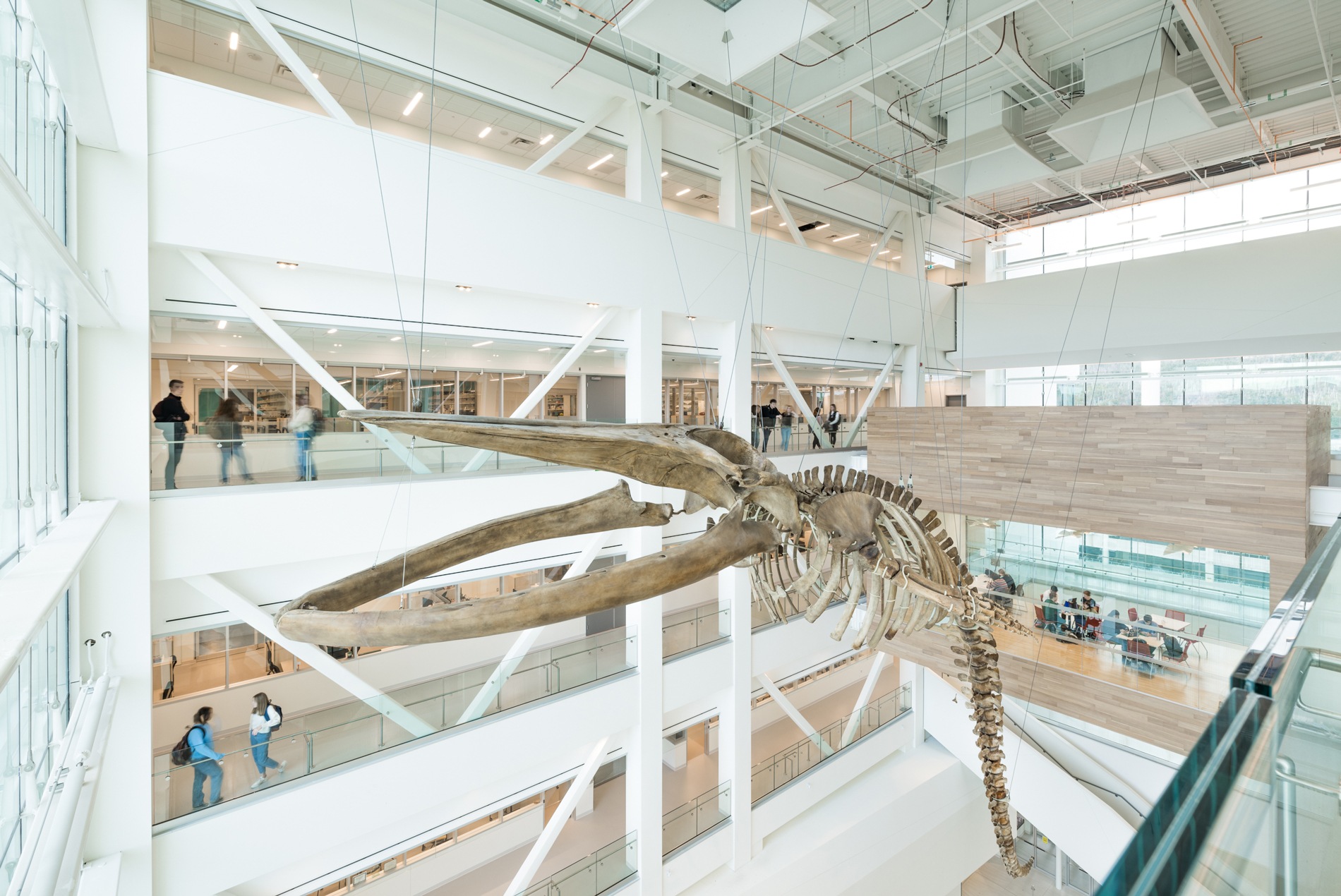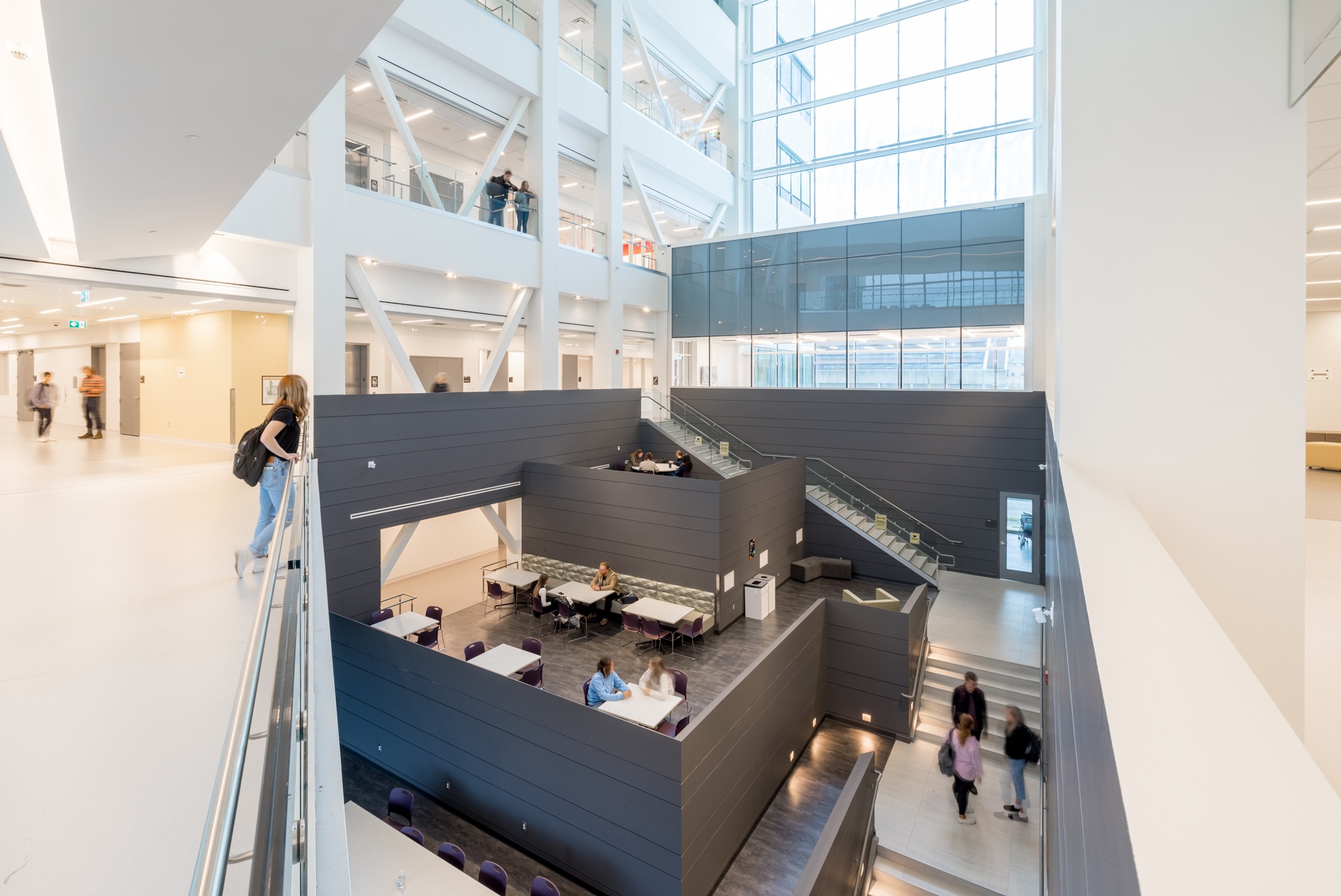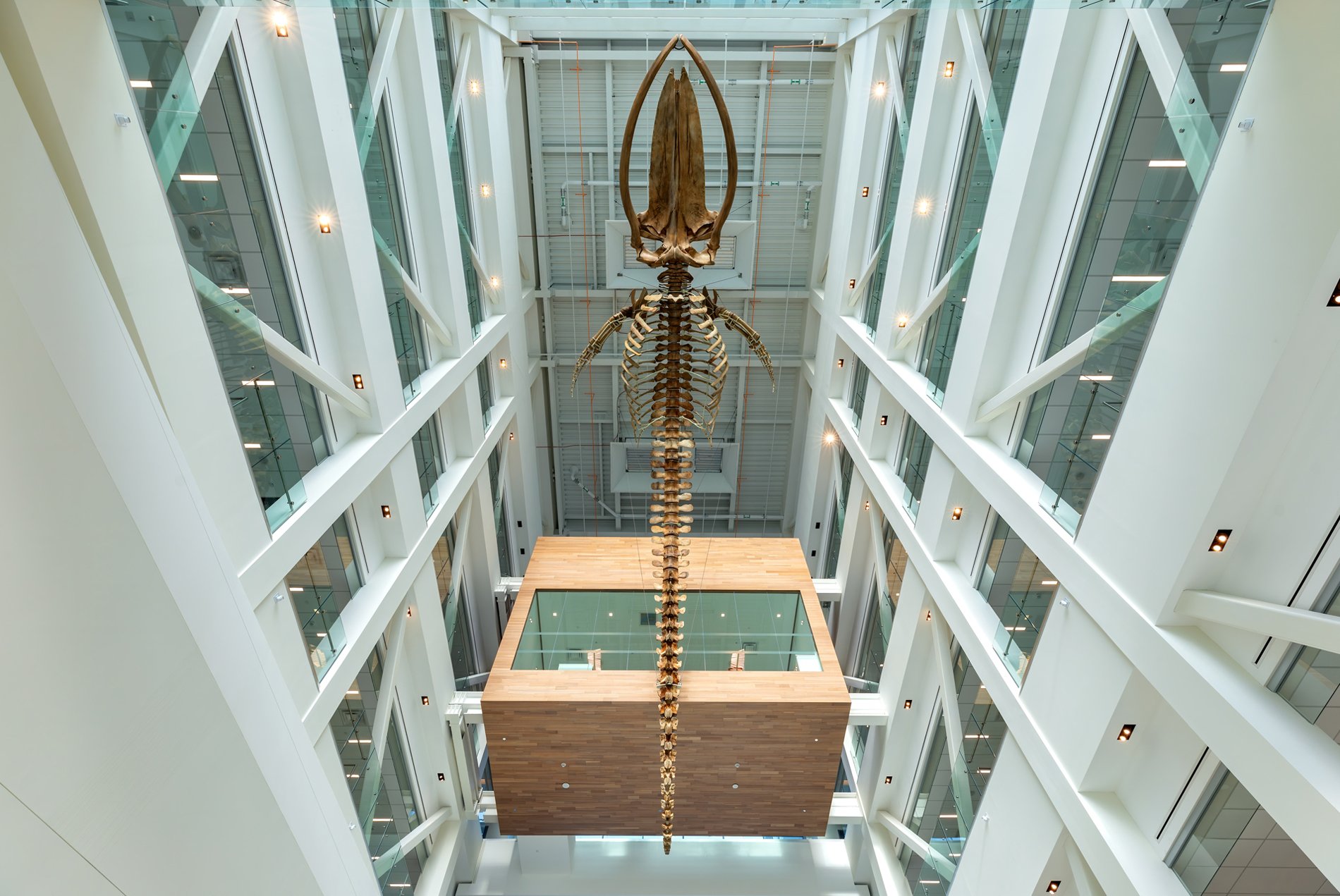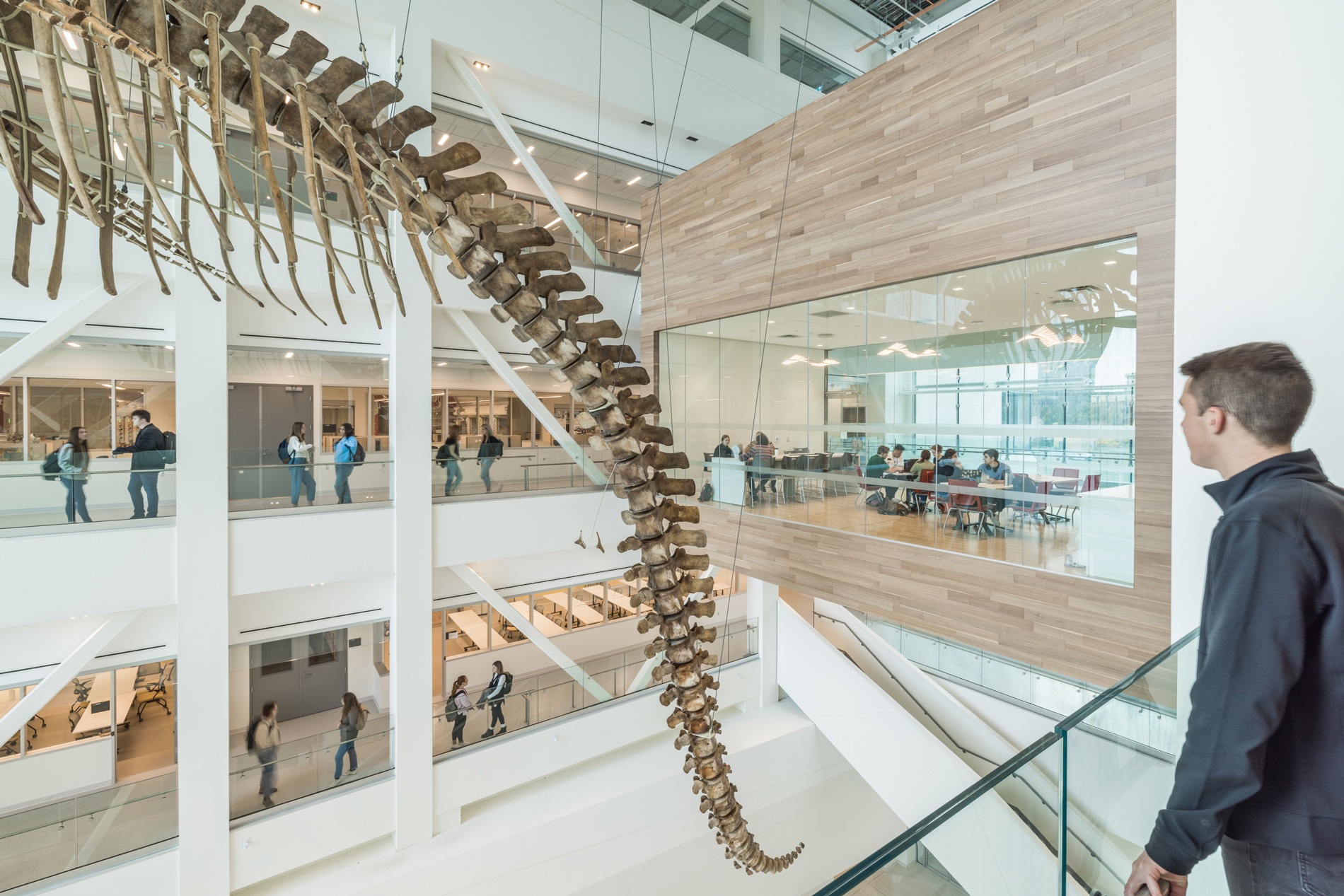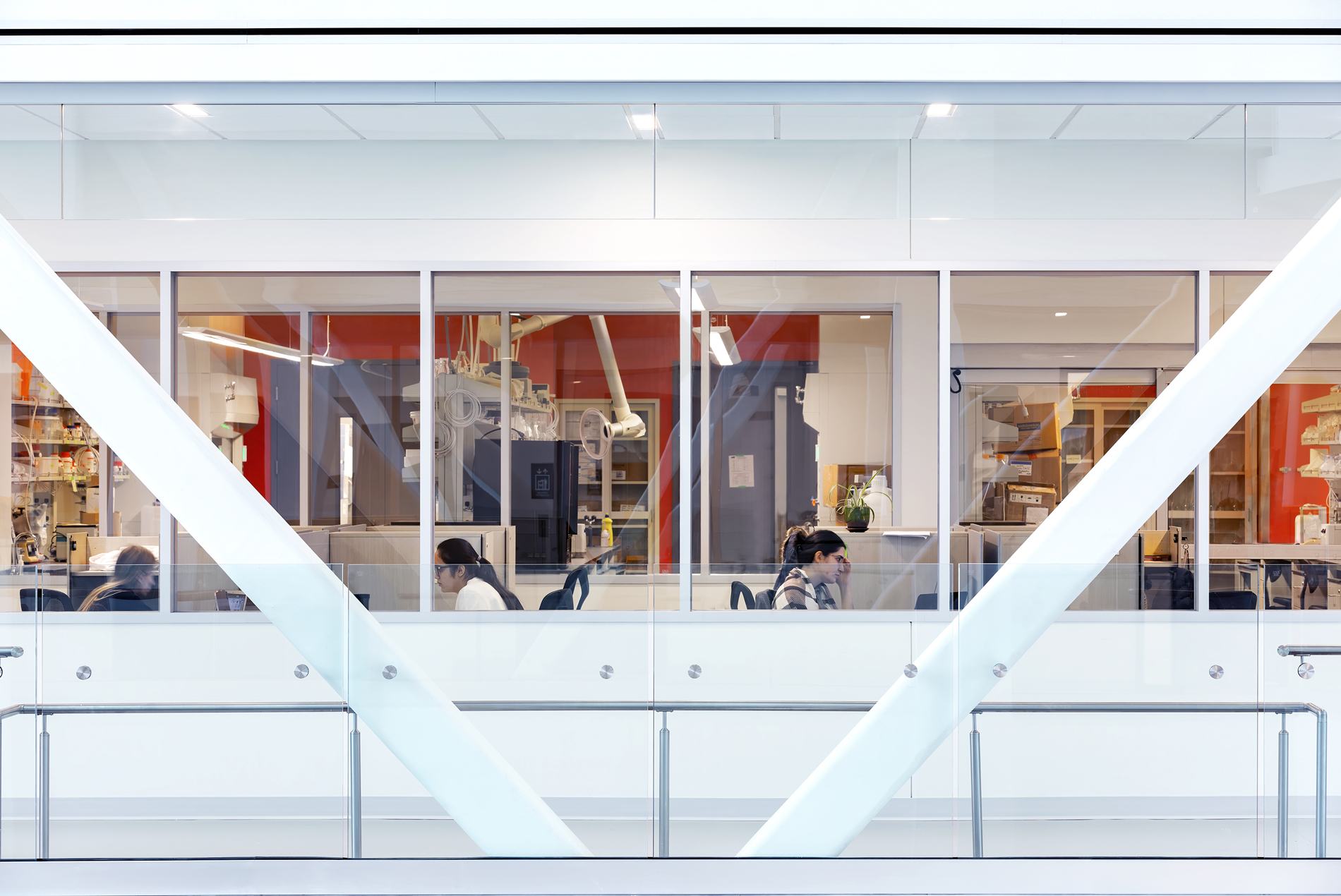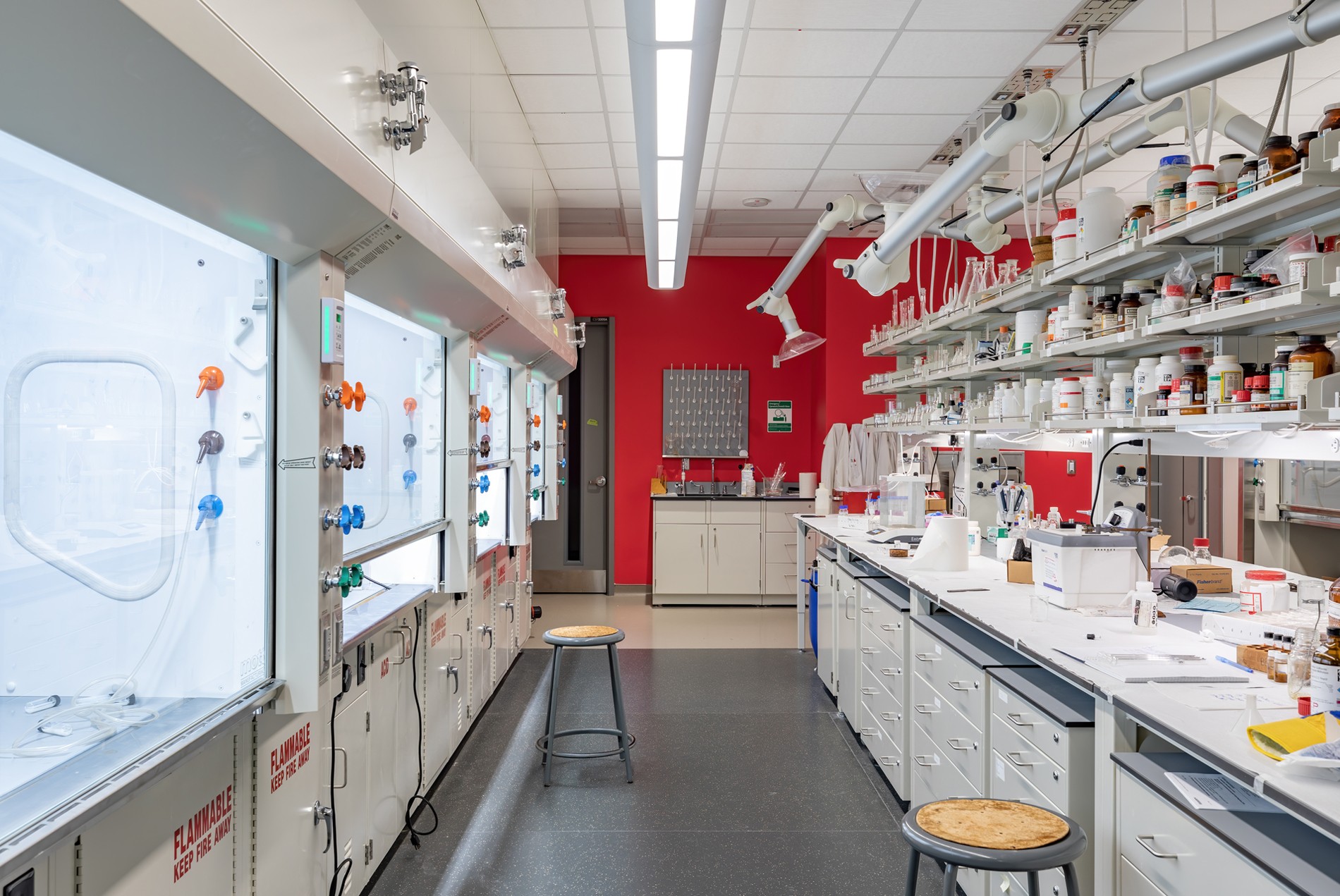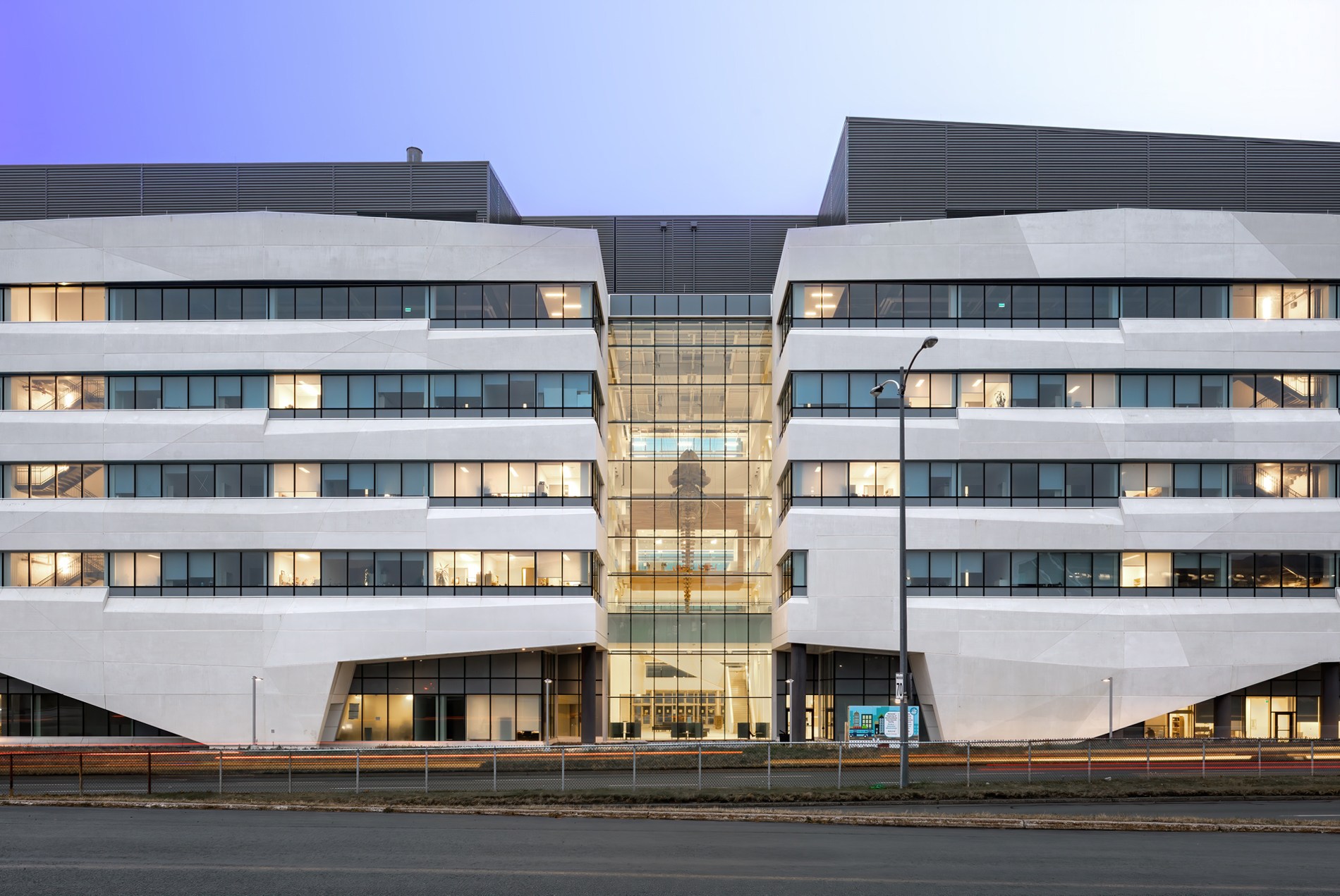Memorial University of Newfoundland Core Science Facility
The design of this sophisticated research and teaching building will enable Memorial University to increase its enrollment. The iconic design, with its bright, open laboratories, classrooms, collaboration spaces and amenities, attracts top students and faculty members to the St. John’s campus.
The facility’s three tower block pavilions are linked by two tall vertical atria that promote the type of “creative collisions” that drive research discoveries.
The North Atlantic’s rugged icebergs and the local marine environment inspired the building’s shape and colors. Suspended from the western atrium ceiling, an 82-foot-long blue whale skeleton that washed ashore in Newfoundland reflects the university’s ocean-related expertise and inspires future scientists and researchers.
The design encourages interdisciplinary collaboration and inspires learning and innovation. The main floor concourse is a vibrant social hub and gathering place for cross-disciplinary interaction. It also houses aquatics labs and classroom, lab and meeting space for the Core Research Equipment and Instrument Training (CREAIT) Network.
The second floor is more student-focused, with project studios, computer labs, classrooms and collaboration areas for hands-on learning. The three upper levels provide research labs and learning spaces for graduate students.
Collocating the research and teaching labs enable them to share specialized equipment while exposing undergraduate students to post-graduate research. Flexible furniture, pod workstations and flat panel screens in lab spaces support group work. Windows into these lab and studio spaces put science on display on all five floors.
The design exemplifies Memorial University’s commitment to sustainability. Chilled beams and a heat recovery wheel reduce the building’s energy use by 40 percent compared to a conventional design. The facility offers private practice space for outside partners, including the Ocean Frontier Institute, to work alongside university researchers to develop sustainable technologies.
HOK collaborated with Hearn/Fougere Architecture on the design.
